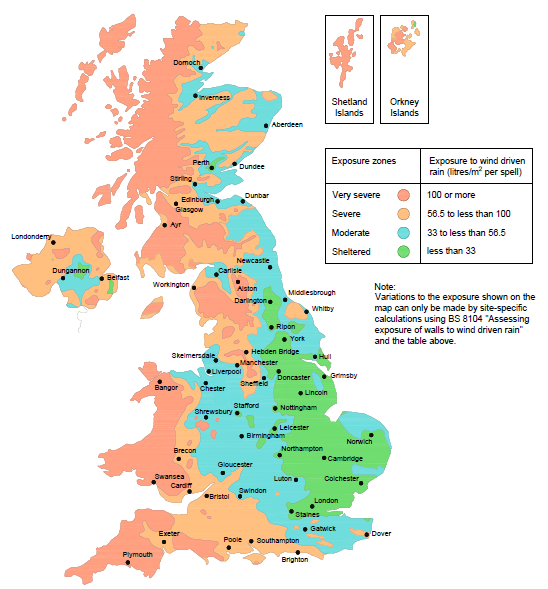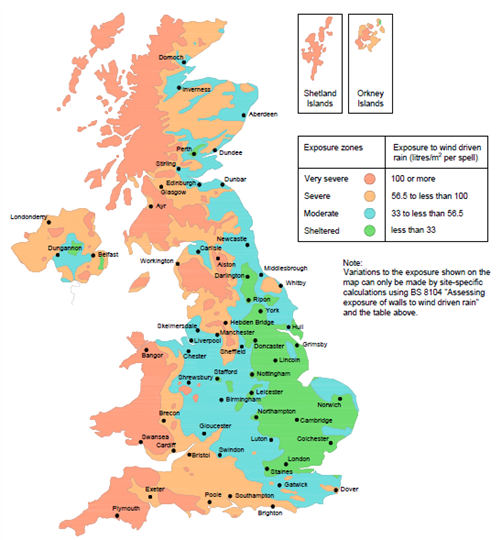Chapter 13 of the Premier Guarantee Technical Manual refers to Developments within 500m/5km of the coastline requiring additional consideration to the effects of a more detrimental site exposure, compared to other parts of the country.
That exposure can be due to the following environmental factors:
The ‘Functional Requirements’ specifically differentiate between:
The guidance that then follows provides a suggested solution to meeting the Functional Requirements.
Chapter 13 of our Technical Manual is currently under review and an issue that commonly needs clarification is that of:
‘How do we define Exposure correctly for a given site?’
The answer is: “A combination of one or more of the above bullet points, all identify for Warranty purposes, that a coastal location represents a higher environmental risk than a non ‘coastal location’.”
The guidance in 13.1.3.2 is to be updated, as the current reference to ‘rain penetration’ in coastal locations is stated ‘deemed to be very severe’. Whilst this is true on many coastal locations, the Wind Driven Rain Map (Figure 1 Chapter 13, below) will show some coastal locations to be a lessor exposure to wind driven rain e.g. Southend on Sea or ‘Moderate’ Ramsgate, Whitby or Aberdeen.


Figure 1: Map showing exposure to wind-driven rain categories
The issue here is that although the Wind Driven Rain Map is a useful guide to the exposure to ‘wind driven rain’, it is not a method to determine the level of environmental exposure for the other factors, such as:
Even using the more accurate guidance in BS 8104 - ‘Assessing the Exposure of Walls to Wind Driven Rain’ - will still only determine a site exposure to wind driven rain.
Both the Map and BS8104 don’t take into account the other factors, such as levels of UV or levels of saline in the rain. Therefore, they should not be used as a reference to accepting potentially lower levels of corrosion protection to exposed steels, or for coatings to finishes having a lower standard or not requiring more regular maintenance.
Conclusion
Where a development is within 5km of the shoreline, the construction is considered to be exposed to aggressive environmental issues, causing the durability of materials in these locations to be at more risk.
Reference to exposure maps for ‘wind driven rain’ should not be used to identify exposure to all the environmental factors associated with a Coastal location.
Sub note regarding identifying sites for Wind Driven Rain:
BS 8104 is a very useful tool for identifying exposure to wind driven rain in the following examples: